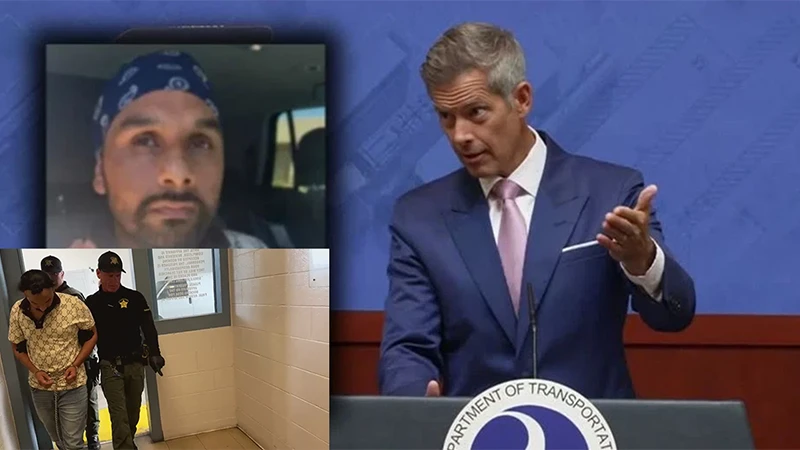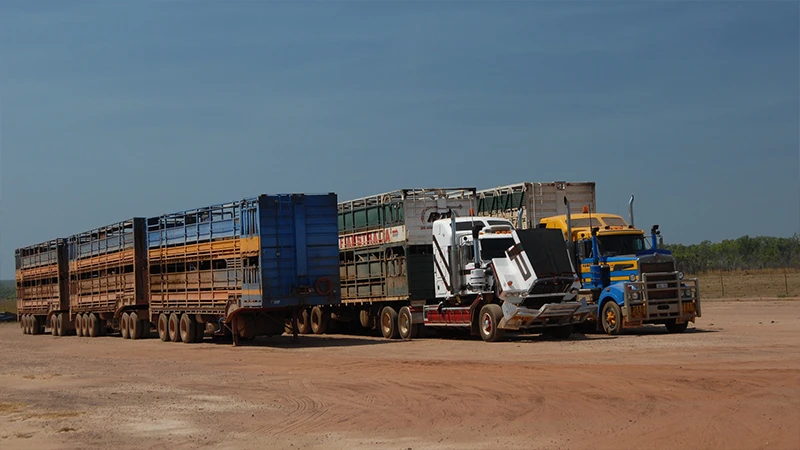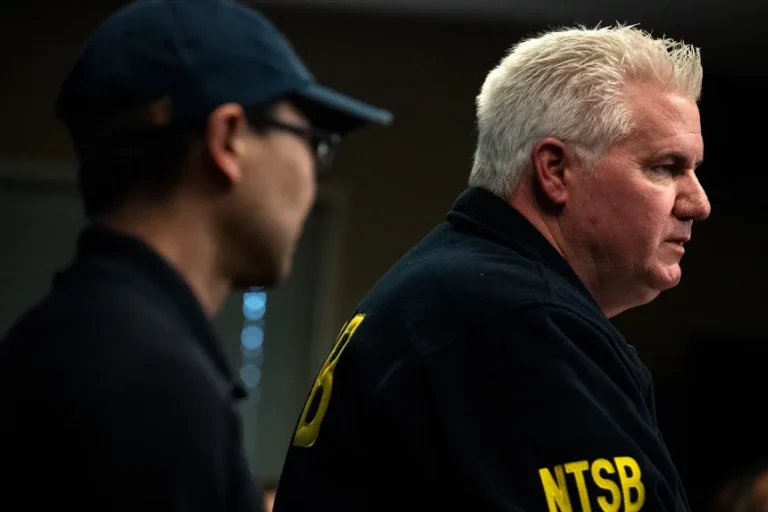A recent high-profile truck crash involving a commercial semi-truck driven by an undocumented immigrant has thrust not only issues of roadway safety into the spotlight but also legal, regulatory and immigration questions that ripple across the U.S.
This article analyzes the crash, the potential consequences for the driver, regulatory fallout, and the broader implications for commercial trucking. Our focal event involved a driver who made an illegal manoeuvre, leading to multiple fatalities.
The Case: What Happened in the Truck Crash
On August 12, 2025, a commercial semi-truck driven by Harjinder Singh, an undocumented immigrant from India, attempted an unauthorized U-turn in the northbound lanes of the Florida Turnpike near Fort Pierce.
The trailer obstructed the highway; a minivan carrying three people collided with the trailer and all three occupants died.
Additionally:
- Singh allegedly had obtained a commercial driver’s license (CDL) from California (and originally Washington) despite immigration status concerns.
- The crash triggered regulatory review and threats to withhold federal funding from states seen as non-compliant with licensing rules.
- At present, Singh has been charged with vehicular homicide and immigration-related violations; he remains in custody.
Legal timeline & analysis — Florida Turnpike truck crash (Harjinder Singh)

Key facts (summary)
On August 12, 2025, a semi-tractor-trailer driven by Harjinder Singh attempted an unauthorized U-turn on the northbound lanes of the Florida Turnpike near Fort Pierce.
The trailer blocked lanes; a minivan struck the trailer and three occupants of the van were killed. Singh was later arrested and charged with multiple criminal counts; ICE placed an immigration detainer.
Chronological timeline (publicly reported dates & events)
- Aug 12, 2025 — crash occurs.
Video distributed by media shows the truck attempting a U-turn at an access/“Official Use Only” area, blocking lanes before a minivan collides with the trailer; three people in the minivan died. Authorities began criminal investigation. - Aug 16–18, 2025 — criminal arrest warrant / ICE involvement announced.
Florida Highway Patrol obtained arrest warrants for three counts of vehicular homicide; ICE placed a detainer after investigators reported Singh entered the U.S. illegally in 2018. DHS/ICE statements and state trooper releases confirmed immigration holds. - Aug 20–23, 2025 — extradition, first court appearance; bond denied.
Reports show Singh was in California, detained there, extradited/escorted to Florida to face charges; at early hearings he was denied bond and was largely non-responsive during initial appearances. Prosecutors added or emphasized counts including vehicular manslaughter in some reports. - Early Sept 2025 — state subpoenas / regulatory reaction.
Florida Attorney General issued subpoenas to the trucking company that employed Singh; investigators sought company records including hiring, training, and payroll. The crash triggered federal-level scrutiny of CDL issuance and possible withholding of federal funds from states with permissive licensing rules for noncitizens. - Sept 29, 2025 — not guilty plea entered.
Court records and local reporting state Singh pleaded not guilty to the vehicular homicide counts; case remains pending as of the last public reports. - Ongoing (Sept–Oct 2025) — investigations continue
(criminal discovery, prosecution preparation, potential pretrial motions, civil claims expected). Media and authorities continue to report subpoenas, possible additional charges, and federal/regulatory actions.
Criminal exposure: what charges and penalties apply?
Primary charges reported:
three counts of vehicular homicide (and related vehicular manslaughter counts in some reports). Authorities also cite immigration violations; ICE lodged a detainer.
Florida law (statutory framework):
Vehicular homicide under Florida Statute §782.071 is typically a second-degree felony (punishable up to 15 years in prison).
If the defendant knowingly failed to give information or render aid (hit-and-run type facts), the offense can be elevated to first-degree felony → up to 30 years.
Sentences depend on conviction type, number of counts, prior record and aggravating factors. (Florida sentencing matrix and statutory ranges apply.)
What prosecutors must prove:
that the driver operated the vehicle “in a reckless manner likely to cause death or great bodily harm” (higher than mere negligence — typically “willful or wanton disregard”).
The prosecution will rely on accident reconstruction, video, witness statements, and evidence of driving decisions to show recklessness.
Possible sentencing range (if convicted):
- Conviction on multiple second-degree counts could lead to consecutive terms — total exposure could exceed 15 years per count depending on how court enters sentences and whether charges are stacked/consecutive.
- If elevated to first-degree felony for failure to render aid, exposure increases (up to 30 years for those counts).
- Immigration consequences (deportation) follow completion of criminal sentence.
Civil exposure & ancillary consequences
- Wrongful-death lawsuits:
families of the three deceased can sue the driver and potential corporate defendants (employer, owner of vehicle, leasing company) for wrongful death and negligence (economic damages, lost wages, pain & suffering).
Public reporting already notes subpoenas to the employer; that suggests civil and regulatory inquiry is active. - Insurance & corporate liability:
plaintiffs typically look to the motor carrier’s liability insurance; if the company is underinsured or noncompliant,
plaintiffs pursue employer liability (negligent hiring, negligent entrustment, failure to supervise). Subpoenas suggest prosecutors/AG are examining the carrier’s compliance. - Regulatory impacts:
DOT/Federal Motor Carrier Safety Administration reviews, potential fines, and state policy changes on CDL issuance for noncitizens — and threatened withholding of federal funds from states seen as non-compliant.

Immigration consequences
Because authorities reported Singh entered illegally and ICE lodged a detainer, two separate tracks run:
- Criminal track (Florida prosecution) — will proceed first; if convicted, sentence served in custody.
- Immigration track — after criminal case/penalty, Singh faces removal proceedings (deportation), and federal authorities may seek custody to begin immigration actions; alternatively, ICE may seek custody upon release. Federal immigration status does not shield a defendant from criminal prosecution.
Comparison to other high-profile truck crash prosecutions (why outcomes differ)
To understand likely outcomes and sentencing variability, compare Singh’s case to three public examples:
- Rogel Aguilera-Mederos (I-70, Colorado, 2019) — initially sentenced to 110 years after a multi-vehicle crash that killed four; massive public outcry led Colorado’s governor to commute the sentence to 10 years.
The case shows how sentencing can swing dramatically based on statutory schemes, judicial discretion, public pressure, and executive clemency — especially where mechanical failure and complex causation appear in the record. - Lincoln Clayton Smith (I-5, Oregon, 2023 crash) — found guilty on multiple counts including manslaughter and sentenced to ~48 years in 2025 after prosecutors proved drug impairment and dangerous driving that killed seven farmworkers.
This case shows long sentences when drug use, recklessness, and multiple fatalities are proven beyond a reasonable doubt. - Jacob McDonald (Licking County / I-70-area, 2023) — found guilty of misdemeanor vehicular homicide for a fatal crash and sentenced to roughly 18 months in 2025.
This shows that charges, proof, and judicial choices (and whether charges are misdemeanors versus felonies) produce much lower sentences in some crashes.
Takeaway: outcomes vary hugely — from months to decades — depending on:
- Whether the conduct meets the higher legal standard of “reckless” or shows aggravators (drugs, intoxication, deliberate misconduct, fleeing).
- The number of victims and demonstrable causal link to driver conduct.
- Evidence of mechanical failure or unavoidable circumstance (defense) vs. clear recklessness (prosecution).
- State statutes and sentencing schemes, and whether sentences are ordered consecutively.
Likely short-term path for Singh’s case (practical forecast)
- Pretrial phase — discovery, expert accident reconstruction, potential motions to suppress or dismiss. Expect prosecutors to build reckless-driving theory using video and reconstruction.
- Plea negotiations — possible but politically fraught (high-profile fatal crash + immigration spotlight). Plea could reduce counts/penalties if both sides agree.
- Trial (if no plea) — prosecution needs to prove reckless conduct; defense may argue accident/mitigating facts. Sentence, if conviction, will track Florida law (see §782.071).
- Civil suits — families likely to file wrongful death suits soon; those are independent of criminal outcome and can result in monetary judgments/settlements.

Final observations & what to watch next
Watch for: indictments/amended charges, defense filing accident reconstruction reports, corporate subpoenas producing employer records, any plea or bond change, and DOJ/DHS statements about custody and deportation.
Why this case is consequential:
it combines catastrophic roadway harm with immigration and CDL-licensing policy implications; that mix increases political and regulatory pressure and can influence prosecutors’ charging choices and potential penalties.
Legal Consequences for the Driver
When considering what the driver might face after a truck crash, several layers of liability and potential consequences apply:
Criminal liability
Because deaths occurred, criminal charges are available. In this case:
- Singh faces three counts of vehicular homicide (for the three fatalities) plus manslaughter and other related charges.
- If convicted, sentencing could include decades in prison depending on state law and the number of counts.
- Because the driver is undocumented, additional immigration enforcement applies: a detainer by U.S. Immigration and Customs Enforcement (ICE) has been lodged.
Civil liability
Even though criminal proceedings dominate attention, a truck crash frequently triggers civil lawsuits:
- The families of the deceased can file wrongful-death claims against the driver and potentially the trucking company/owner or other parties (for negligent hiring, training, vehicle maintenance, etc).
- The fact that the driver was operating without proper licensure or under false credentials strengthens those claims.
- Insurance coverage, company liability and asset availability become key issues—if the company is under-insured or non-compliant, recovery may be limited.
Regulatory and licensing consequences
- The crash has prompted federal regulators (U.S. Department of Transportation) to tighten commercial licensing rules for non-citizens/undocumented drivers.
- States may face funding sanctions: e.g., California was threatened with ~$40 million in withheld funds for failing to enforce English‐language proficiency/driver-licensing standards.
- For the driver: revocation of the CDL, bars to re-licensing, and added scrutiny in any future employment.

Why the Driver May Be Held Fully Responsible
Several aggravating factors in this case amplify liability in the truck crash context:
- Improper manoeuvre – A U-turn in an unauthorized location for a semi-truck presents extremely high risk.
- Undocumented status + licensing irregularities – The driver’s immigration status and questionable CDL acquisition raise doubts about training, eligibility and compliance.
- Commercial vehicle context – A semi-truck weighs tens of thousands of pounds; when large vehicles crash, results are more catastrophic, and standard of care is higher.
- Multiple fatalities – The more deaths and injuries, the higher criminal exposure and the greater the civil damages.
- Regulatory non‐compliance – If the trucking company lacked proper registration, insurance, or oversight, plaintiffs may have multiple targets beyond the driver.
Possible Outcomes & What to Expect
For the driver
- Conviction: Long prison term, loss of driving privileges, deportation after sentence or as alternative to sentencing.
- Settlement or civil judgment: Large financial obligations to victims’ families; possible prison sentence plus civil liability.
- Removal from the U.S.: Upon completion of criminal penalties, undocumented status means likely deportation.
For the trucking company/owner
- Investigation for negligent hiring/training.
- Exposure to lawsuits for punitive damages or gross negligence if willful non‐compliance found.
- Regulatory sanctions, loss of operating license, significant insurance premium increases.
For policy/regulatory landscape
- Stricter enforcement of commercial driver licensing especially for non-citizens.
- States may tighten rules about issuing CDLs to undocumented immigrants.
- Federal grants/funding for states linked to compliance with commercial driver safety standards.

Broader Implications for the Trucking Industry
This particular truck crash brings into sharp relief several industry and regulatory trends:
- The gap between licensing requirements and actual driver eligibility (immigration, competency, language proficiency) is under scrutiny.
- Commercial trucking involves heightened public-safety expectations: mistakes or negligence have severe consequences.
- Since large trucks present disproportionate risk, regulatory agencies are increasingly active when a crash involves a semi-tractor-trailer.
- Insurers, carriers and regulators may use this case to push for tighter oversight, audit of CDL issuance, and stronger enforcement of federal standards.
What We Don’t Know Yet
- The final criminal verdict for Singh has not yet been reported publicly at time of writing.
- Detailed findings on the trucking company’s registration, insurance and maintenance records remain pending.
- Civil lawsuits have likely not yet been publicly settled or adjudicated (if filed).
* Whether the driver’s immigration status will influence sentencing or civil outcomes is still unfolding.
Key Takeaways for Drivers, Carriers & the Public
- If you’re a driver (especially of a large commercial vehicle), strict compliance with licensing, training and company policy is non-negotiable. One bad maneuver in a heavy rig = catastrophic results.
- Carriers must vet driver credentials thoroughly (including immigration/legal status, licensure history, language proficiency) and document that process.
- The public and policymakers will increasingly hold states accountable for how commercial CDLs are issued and for verifying eligibility of big rig drivers.
- After a truck crash, look for legal exposure on multiple fronts: criminal, civil, regulatory, immigration. The stakeholder map is much broader than just “driver at fault.”

Conclusion
In this tragic case of a truck crash involving a semi-tractor driven by an undocumented immigrant who executed an illegal U-turn—resulting in multiple fatalities—a full spectrum of consequences lies ahead.
Criminal prosecution, civil liability, regulatory reform and immigration enforcement all now converge.
While the driver remains charged and awaiting trial, the incident is already catalyzing policy change and industry reflection.
For anyone involved in commercial trucking—drivers, carriers, attorneys, regulators—the message is clear: oversight, compliance and safety standards cannot be treated as optional.
When they fail, the consequences can be profound.





